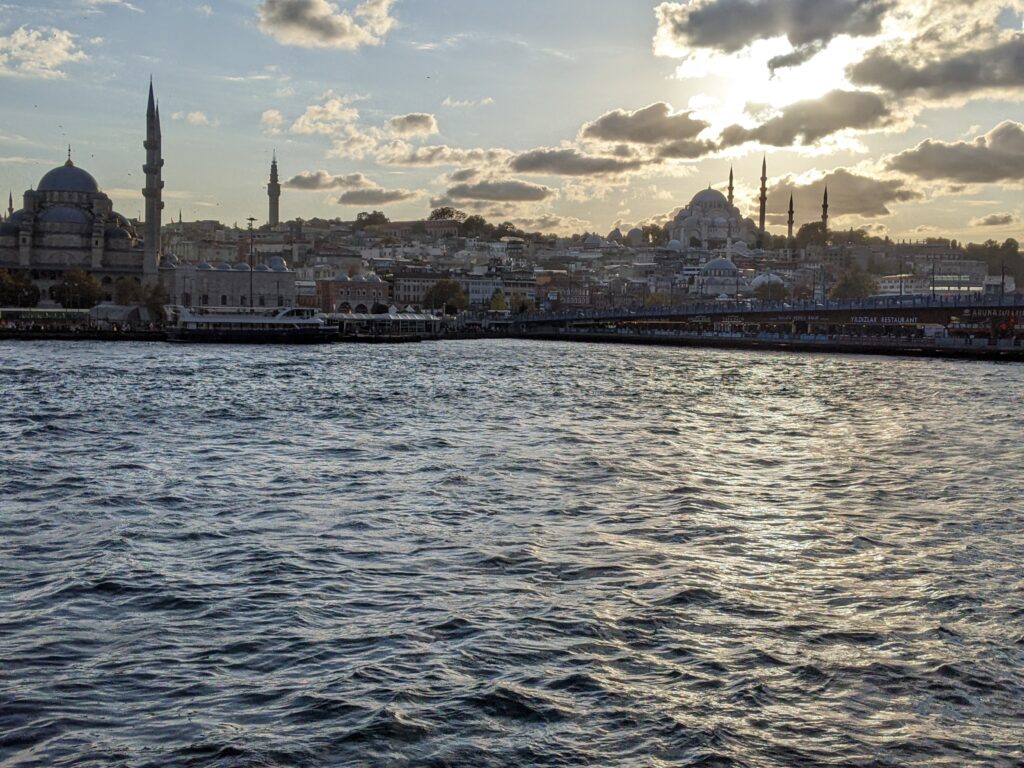
The image above is what you expect from Istanbul. Its the terminus for the old Orient Express and the bridge from Europe to Asia.
The tourist numbers – seen in the queue to get into Topkali Palace below – are also part of the scene in 2022 post-Covid lockdowns.
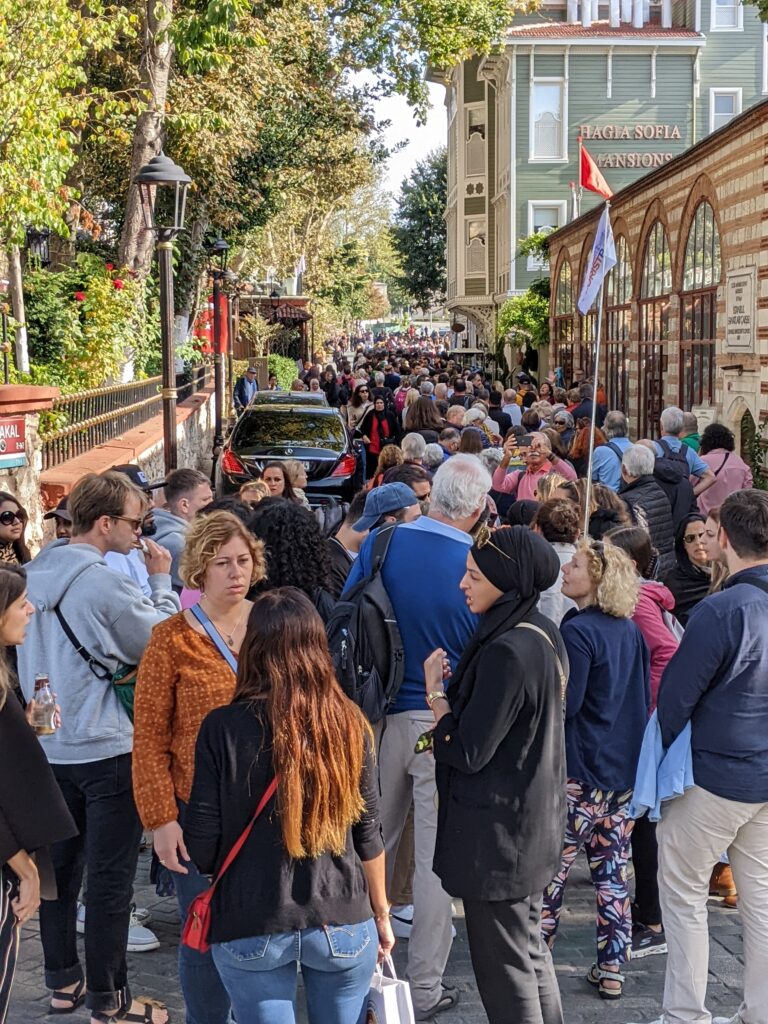
But as usual I will follow Walt Whitman in this blog: “Keep your face always toward the sun and the shadows will fall behind you.” In other words I won’t be writing much about the downsides of travel, such as walking down a street with restaurants, even outside the tourists areas of Istanbul (and I have certainly gone far beyond them) and getting solicited by an unsmiling tout with an almost robotic tone of voice… and then immediately the exact same thing happening with the next young man outside of his establishment. Or laying in bed at at 6am and hearing the call to prayer, amplified in a dirge-like wail, dropping in descending tones, and often conflicting with another call to prayer coming from another nearby mosque.
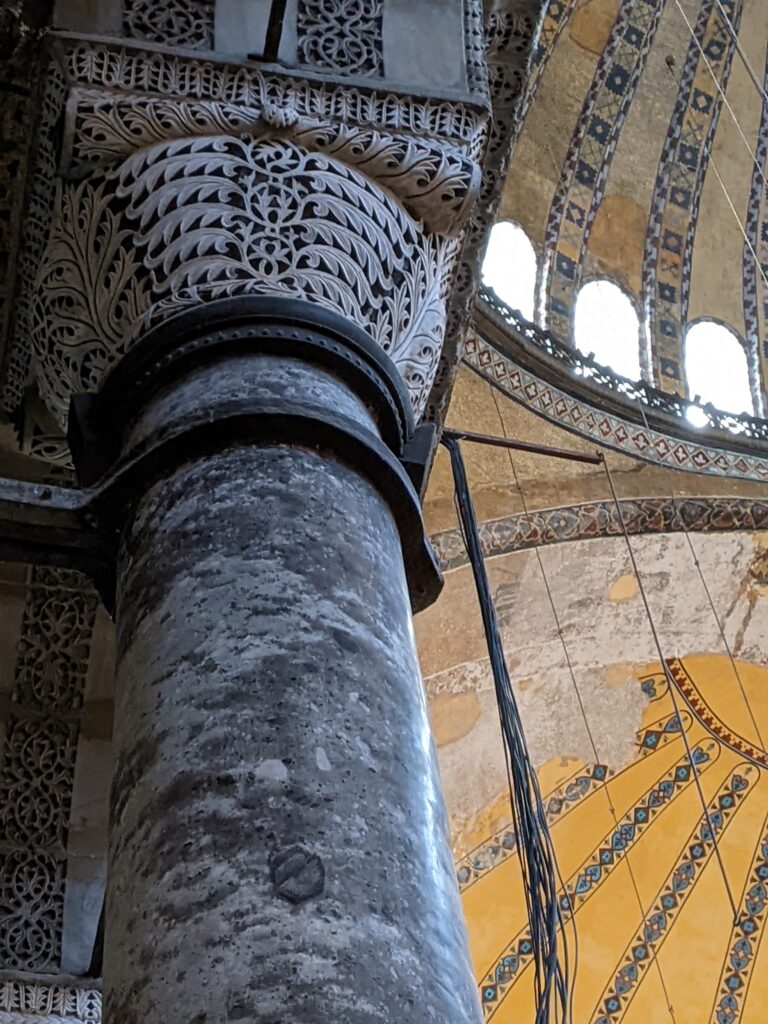
A carved capital from inside Hagia Sophia. I entered Hagia Sophia early one morning, and went to the far right to find a corner of the space and sit down away from the crowds by myself with stillness and quiet. I was able to sink into the thick carpet and lean against the 1500 year old green marble panelled wall, and contemplate the vast dome of Justinian and the beautiful carved capitals above the marble columns and pilasters. It felt so good to just lean against the wall and be still and quiet out of the vast noisy crowds that churn along the streets of Istanbul. As this really is a city of noise and crowding – so many million people spread out in low and high rises. I relished the space to just be here and sense the elements of the architecture and the emptiness high above me, felt and sensed by members of the Roman empire one thousand five hundred years ago.
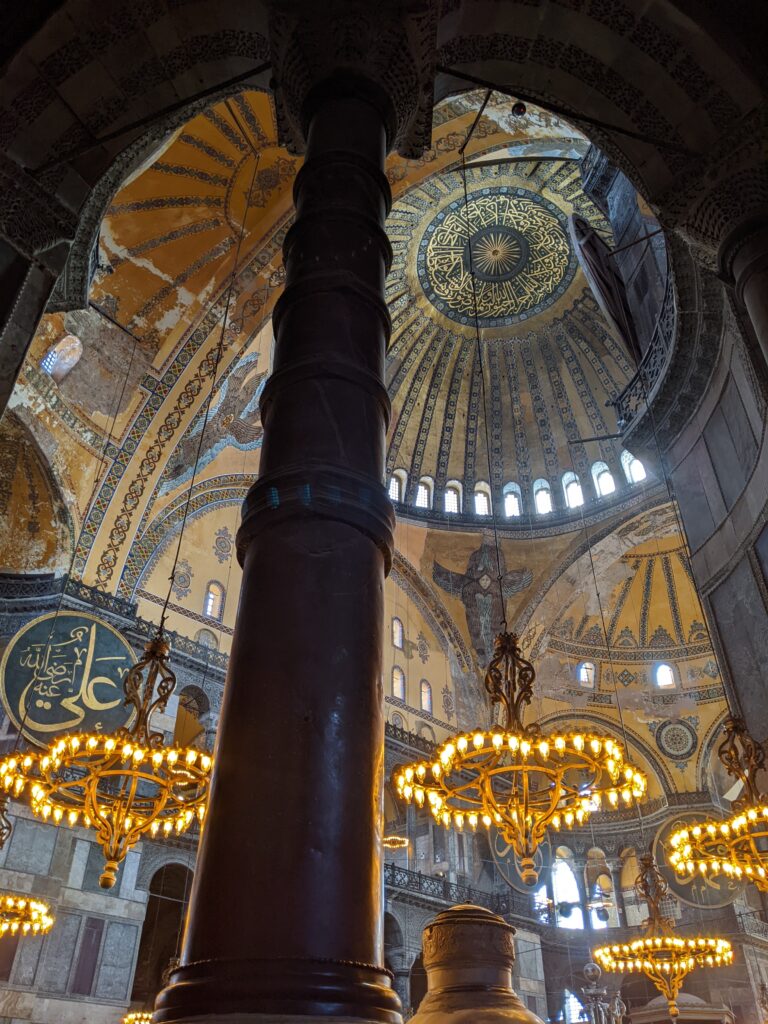
The next morning earlier this week I had a wonderful start to the day – went to the Archaeology Museum next to Topkali – many Greek and Roman sculptures, and by far the most beautiful relief carving from ancient Roman civilisation I have ever seen on sarcophagi. Much of it was found underground in a dark chamber in rural Lebanon in the late nineteenth century. The reliefs are absolutely peerless – one with mourning women in shawls is a picture of grief.
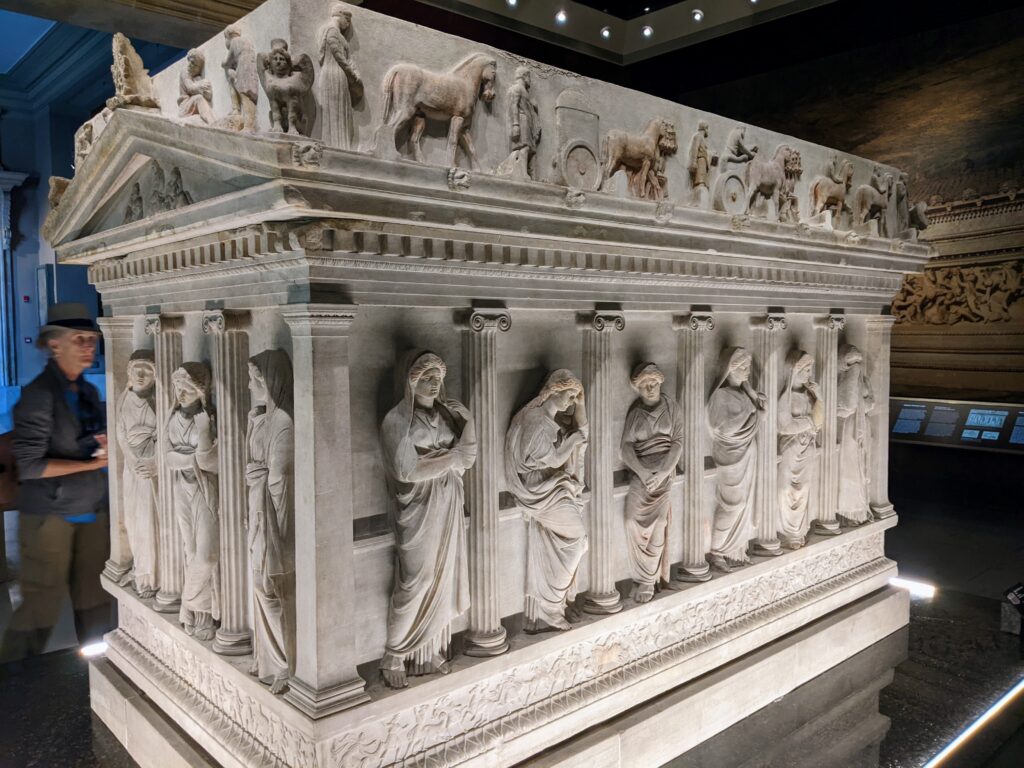
This figure stood out to me particularly as a picture of grief.
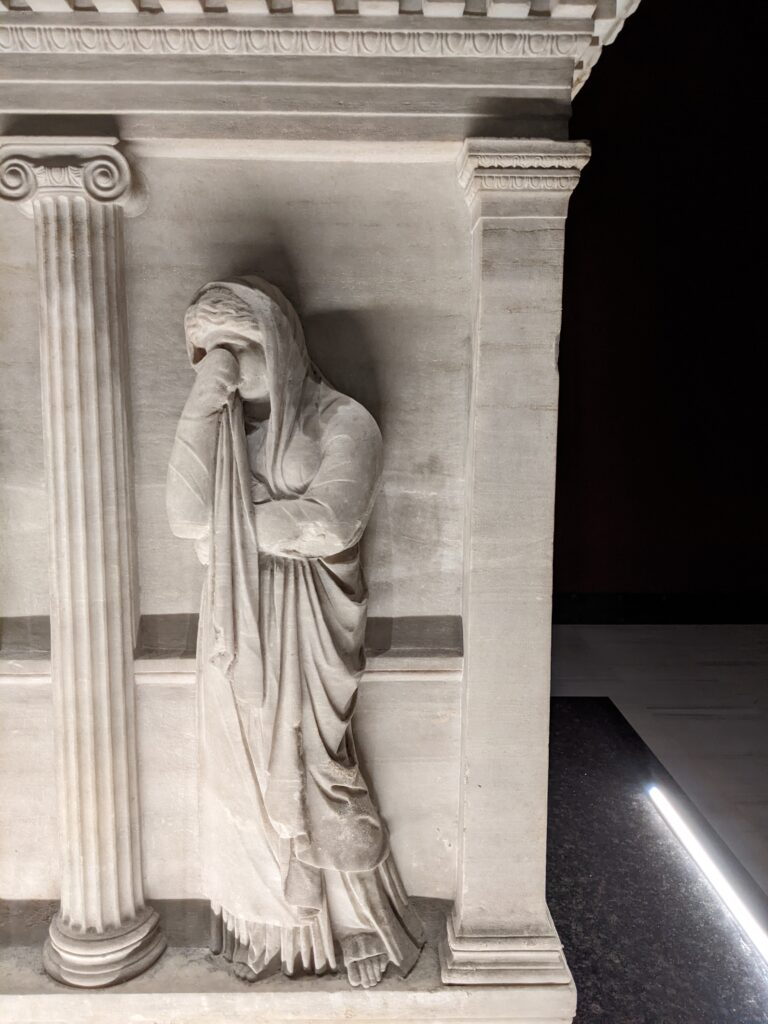
This is from around 350BC in Sidon in Lebanon, and was brought here in the late nineteenth century when the area was part of the Ottoman empire. Can you imagine peering a torch down into a burial chamber and seeing such huge marble sarcophagi when these were discovered back in the nineteenth century? What a sense of wonder this moment must have occasioned.
Another section of another relief, not so much for its carving but for the happier subject matter – a vision of the good life. Peace and plenitude and wine and company – and a dog.
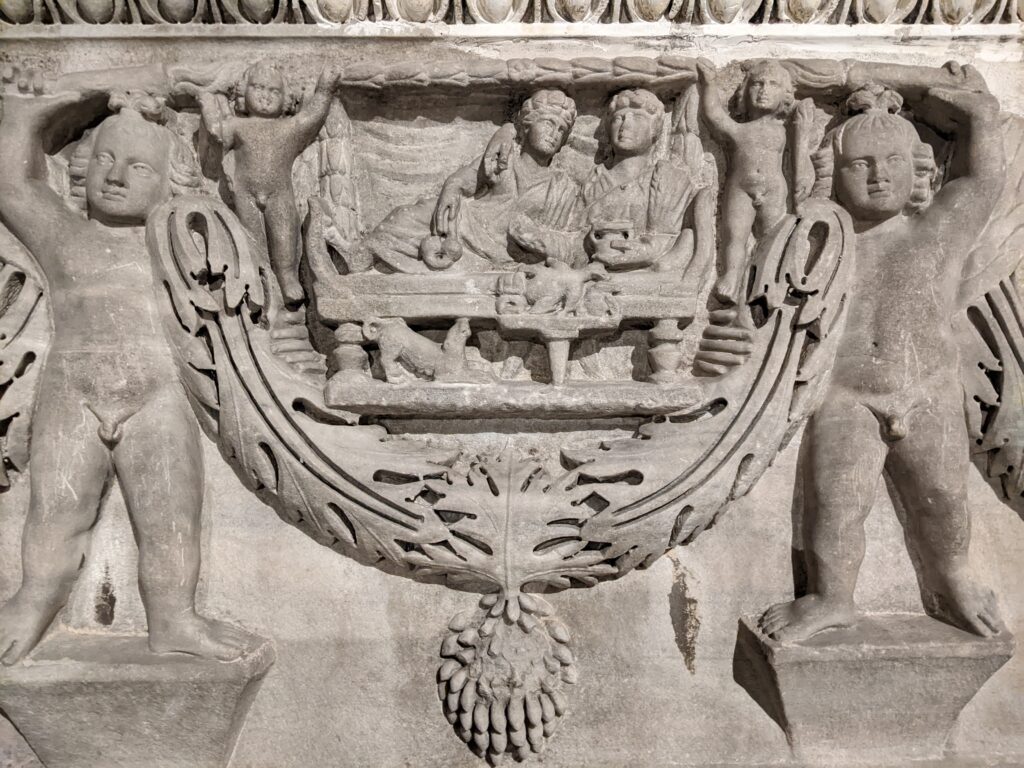
Not to mention cats… I had seen the 2016 film Kedi, about the cats of Istanbul, when back in Australia. They certainly do get around and there are lots of them. Here I saw one cheeky ginger taking up a seat at a very busy tram stop.
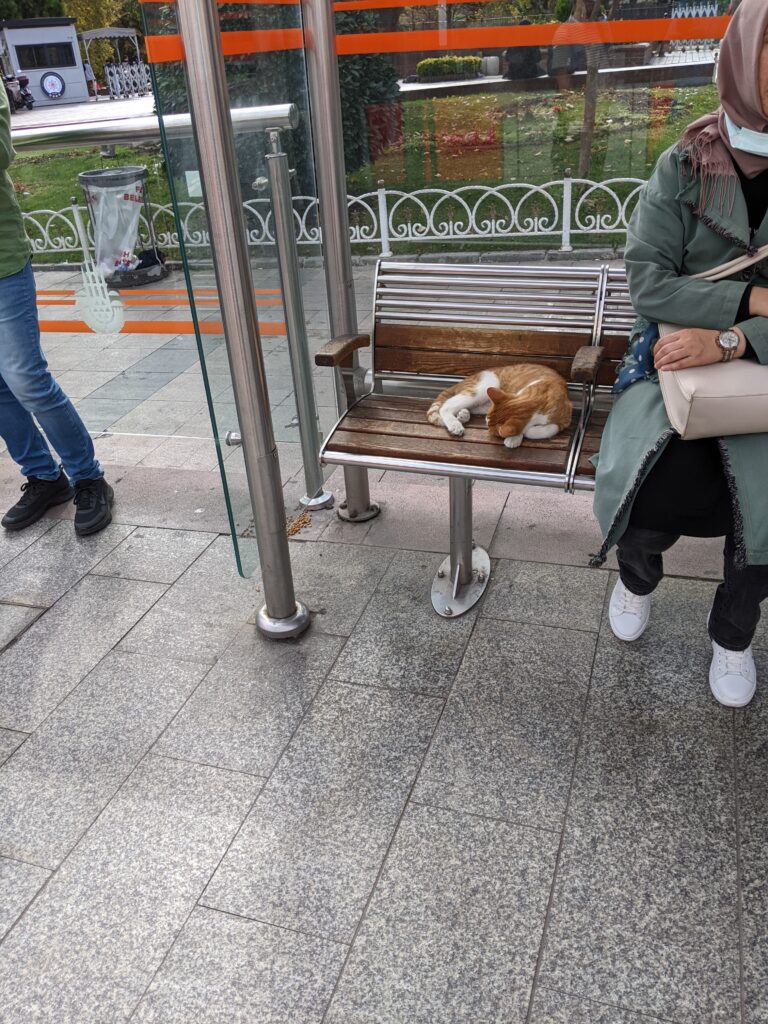
I was on the way to the Prince’s islands – about an hour’s ferry ride from the mainland.
We got off on the second island stop and walked up the steep hill through tightly packed houses with locals going about their business. After a very steep climb we burst out into the trees at last. I found my way out into the woods, and sat looking down on a bay, with the mountains of Gallipoli far away in a dark line on the horizon over many kms of sea. The trees were pines and had a bonsai like twist and bend in many of their trunks, and the undergrowth was sparse enough that you could see and walk with a sense of openness. It made me think of John Fowles’ opening scenes in The Magus, based on his time teaching at a school on a Greek island in the fifties and contemplating philosophy and the creative impulse of Apollo on lonely hill sides amongst such trees, high above the Aegean. I was high above the Sea of Marmara, and I savoured those moments by myself amongst the pine trees, with the still sea below as wine dark as Homer’s Aegean.
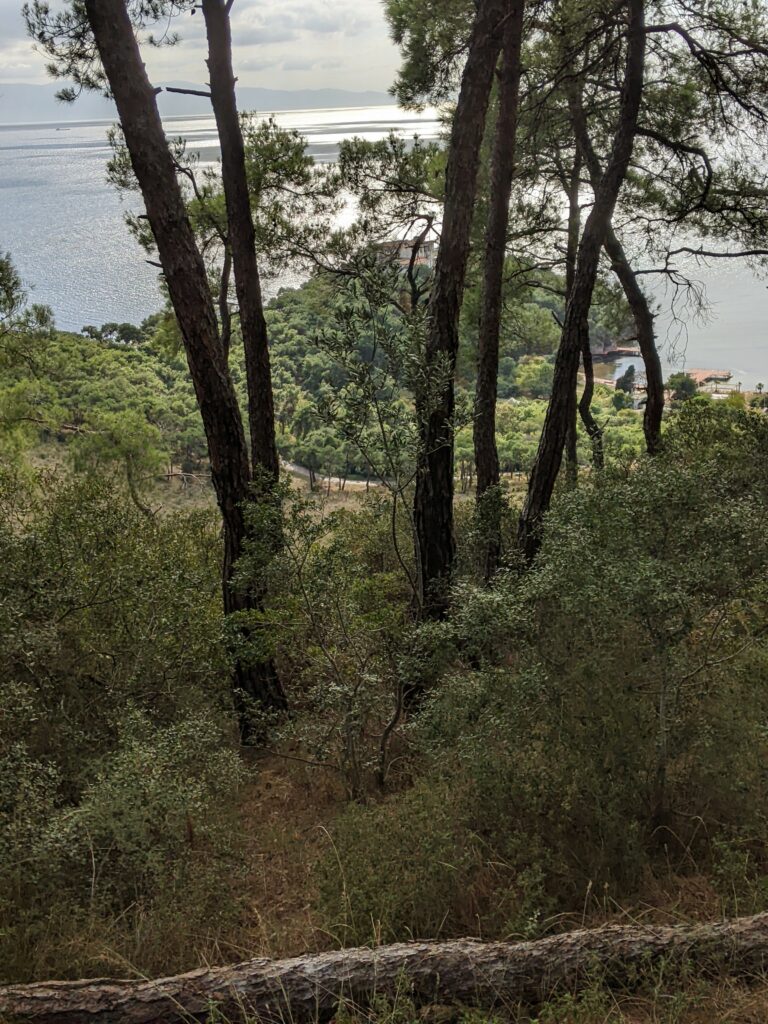
Walking on a quiet street on Heybeliada I found a decayed Ottoman era mansion.
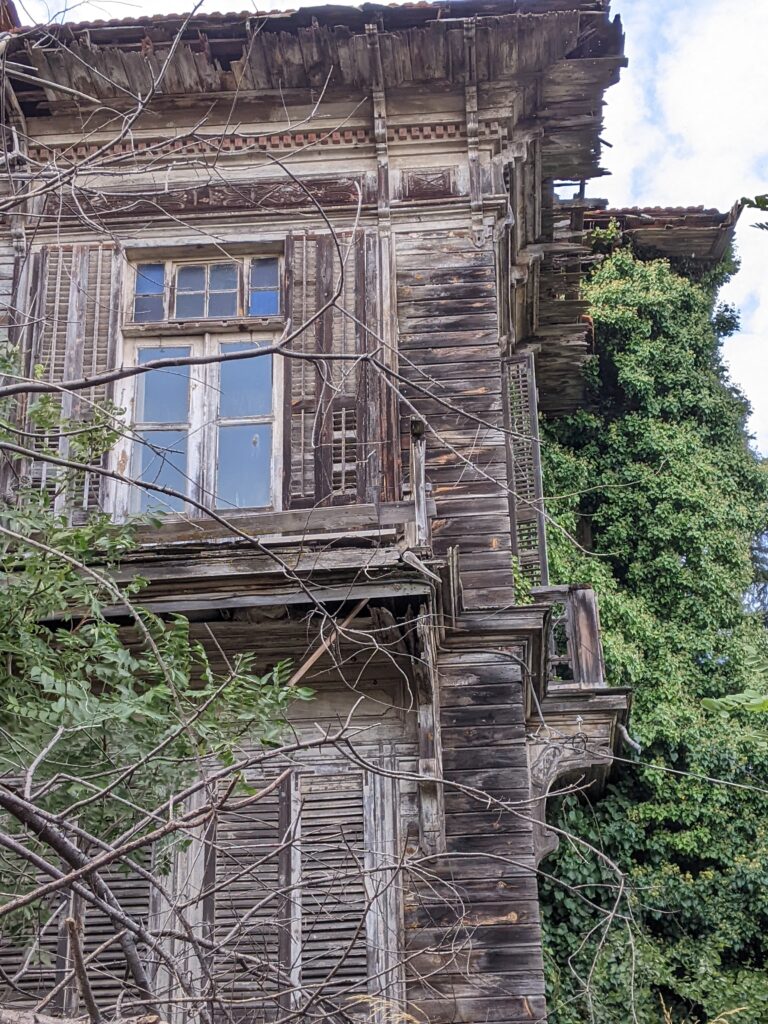
Nature was engulfing this old home, but the carpenter’s skill is still to be seen, high up above in the sky.
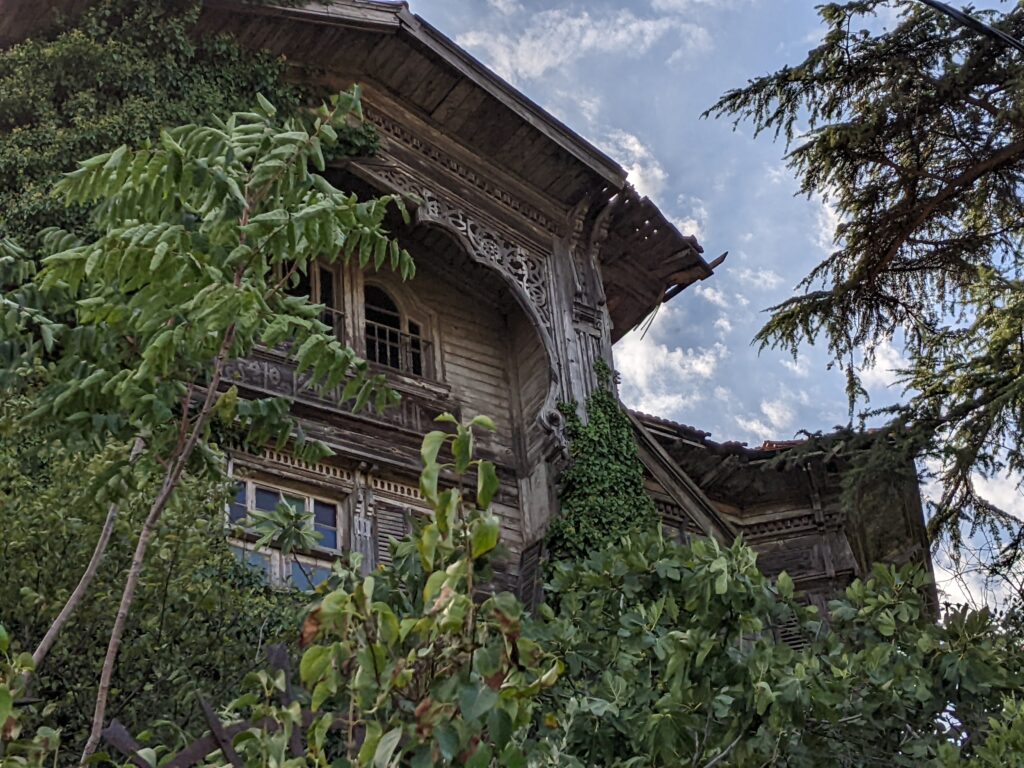
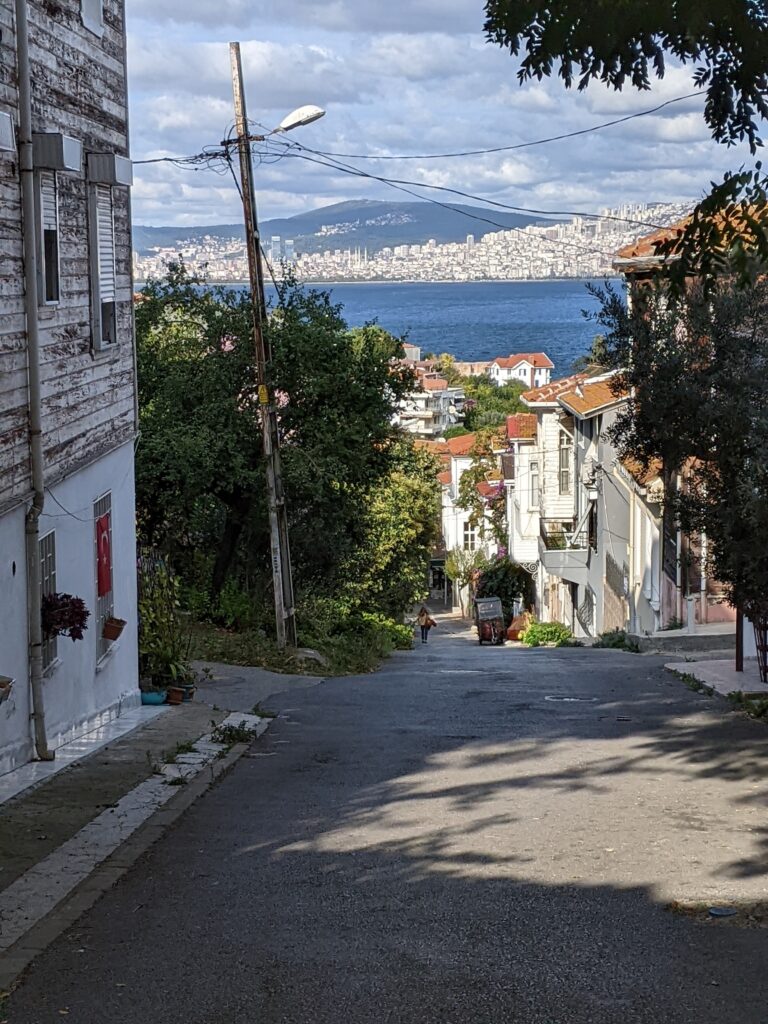
The perspective down the hill is to the sea and on the other side, modern Istanbul, city of 15 million.
I could write more about history, commenting on Topkali Palace for example with its warren-like hareem. However I will leave you with a cliche of Turkey, food that still makes my mouth water.
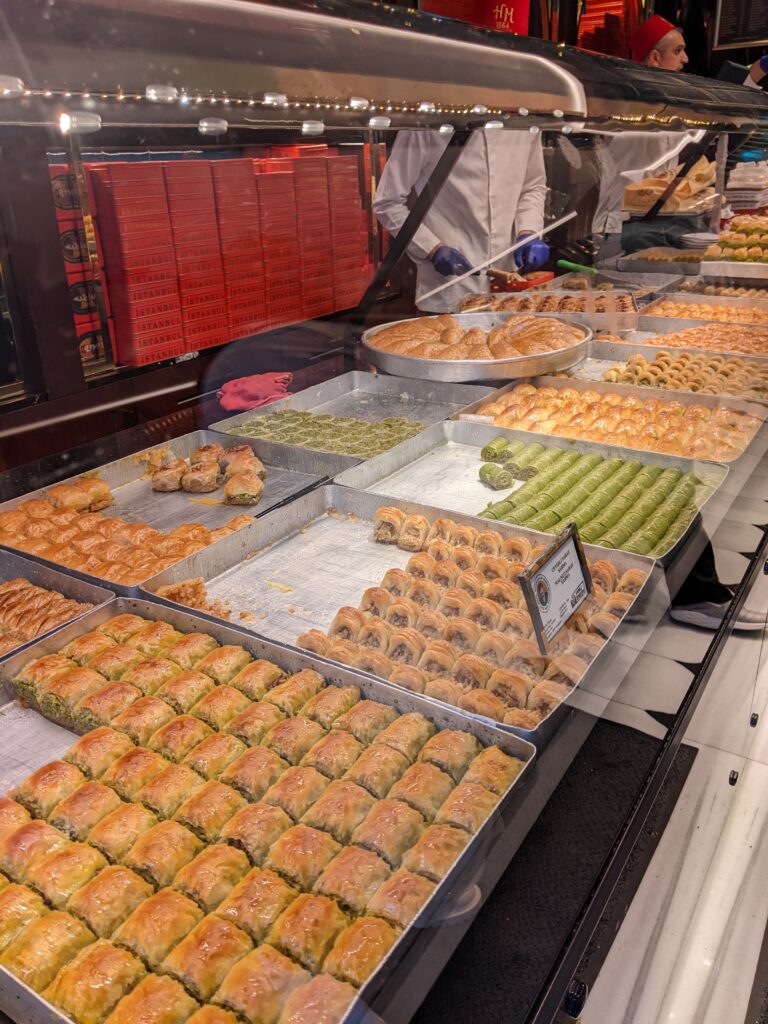
Now I’m sitting in this hotel room, waiting for the final few moments to pass before I take a short taxi ride to Istanbul’s new airport, and then, all going well, lift off for Dubai, and hence to Bangkok.
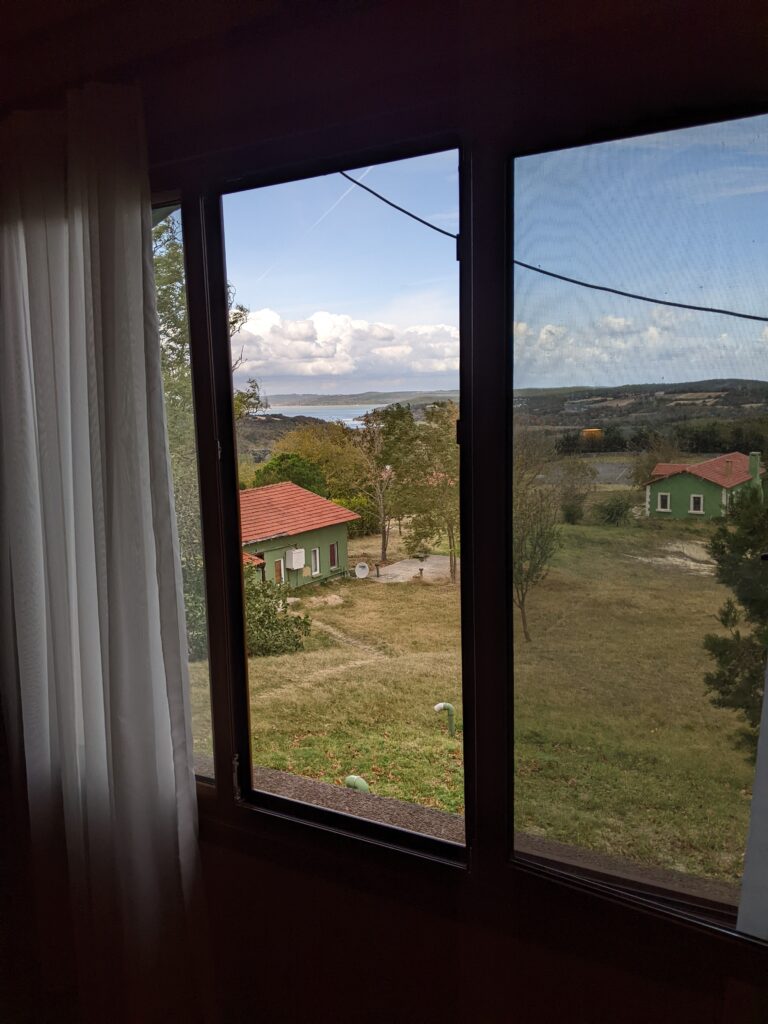
I spend 100 dollars just to have a hotel room in the country near the airport today as I had had enough of crowds and noise and cities and movement. It has been perfect to be solitary and silent and think and write my blog, looking back on the last three weeks. Here I am waiting for my plane to Asia. I have experienced so many cultures and countries these past few weeks. Voyages extraordinaires, and they aren’t over yet.